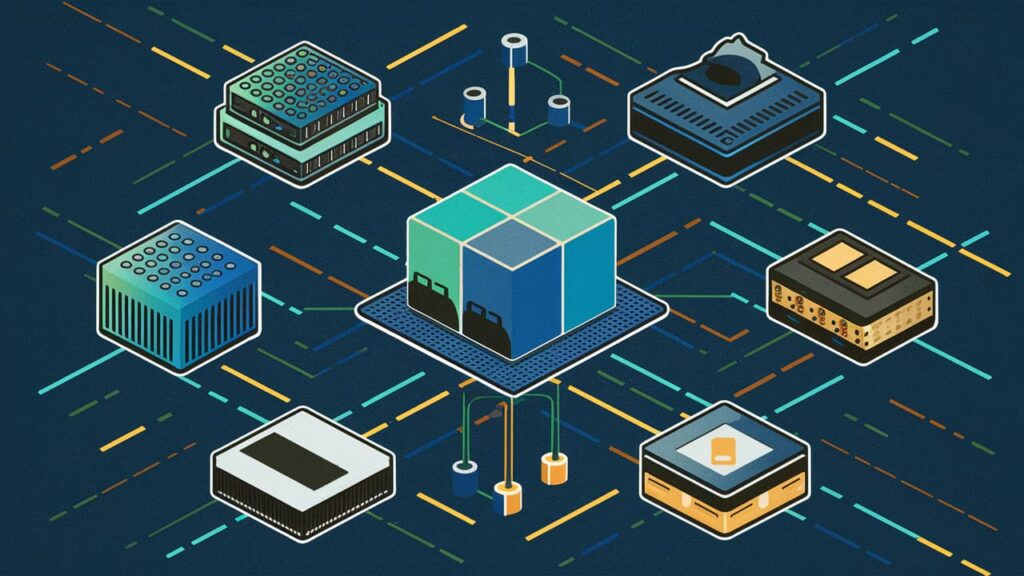In the rapidly evolving landscape of technology, businesses are in a perpetual quest for avant-garde solutions to streamline their operations, boost productivity, and maintain a competitive edge. At the nucleus of this digital metamorphosis lies IT Infrastructure Solutions—the bedrock that underpins the flow of information and empowers organizations to realize their objectives. In this extensive discourse, we shall delve deep into the domain of IT infrastructure solutions, dissecting its fundamental constituents, discerning prevailing trends, and elucidating the manifold benefits that are shaping the contemporary business milieu.

Unveiling the Essence of IT Infrastructure
IT infrastructure encompasses an extensive array of hardware, software, networks, and services that constitute an organization’s information technology ecosystem. From robust servers and sophisticated storage devices to intricate networking equipment and dynamic cloud platforms, each element plays a pivotal role in ensuring seamless connectivity, unfettered data accessibility, and unwavering system reliability.
Core Components of IT Infrastructure Solutions
Hardware: Forming the physical bedrock of IT infrastructure solutions, hardware encompasses an array of servers, workstations, laptops, storage arrays, and networking devices. These components furnish the requisite computing power and connectivity vital for supporting diverse business operations.
Software: The software realm comprises operating systems, database management systems, productivity suites, and specialized applications. These software enablers facilitate data management, task automation, and collaborative endeavors within organizations.
Networking: The networking domain encompasses routers, switches, firewalls, and wireless access points, which collectively establish the network infrastructure. This infrastructure facilitates seamless communication between devices, efficient data transmission, and uninterrupted internet connectivity.
Storage: Storage solutions, including on-premises storage arrays and cloud storage services, cater to the imperative need for capacity and scalability in securely storing and retrieving copious volumes of data.
Cloud Computing: Cloud platforms proffer flexible, scalable, and cost-effective IT infrastructure solutions. They allow organizations to harness computing resources, storage, and applications on-demand sans the necessity for extensive on-premises infrastructure.
Pivotal Trends Influencing IT Infrastructure Solutions
Hybrid Cloud Adoption: Organizations are increasingly gravitating towards hybrid cloud models, amalgamating on-premises infrastructure with public and private cloud services. This approach augments flexibility, scalability, and resilience in IT infrastructure deployment.
Edge Computing: The proliferation of Internet of Things (IoT) devices and real-time applications has propelled the adoption of edge computing solutions. These solutions facilitate localized data processing and analysis at the network periphery, thereby curtailing latency and bandwidth consumption.
Software-Defined Infrastructure: Software-defined networking (SDN) and software-defined storage (SDS) technologies are at the vanguard of revolutionizing IT infrastructure management. They offer centralized control, automation, and resource provisioning agility, thereby enhancing operational efficiency.
Security and Compliance: With the evolving landscape of cyber threats, organizations are increasingly prioritizing cybersecurity in their IT infrastructure strategies. This entails the implementation of robust security measures and adherence to stringent regulatory frameworks.

The Advantages of IT Infrastructure Solutions
Enhanced Efficiency: Streamlined processes, automated workflows, and centralized management mechanisms contribute to heightened operational efficiency and productivity within organizations.
Augmented Agility: The scalability and flexibility inherent in modern IT infrastructure solutions empower organizations to swiftly adapt to evolving business imperatives and dynamic market conditions.
Cost Optimization: By leveraging cloud services, virtualization, and automation, organizations can mitigate capital expenditure, optimize resource utilization, and curtail the total cost of ownership associated with IT infrastructure.
Business Continuity: Robust disaster recovery and backup mechanisms ensure data integrity and minimize downtime, thereby safeguarding against data loss and service interruptions.
Concluding Thoughts: Embracing the Evolution of IT Infrastructure
In summation, IT infrastructure solutions serve as the cornerstone of digital transformation, enabling organizations to flourish amidst the rigors of a competitive marketplace. By judiciously harnessing the synergies between hardware, software, networking, and cloud technologies, businesses can unlock a plethora of opportunities, foster innovation, and realize their strategic objectives.
Whether you’re a burgeoning startup poised for exponential growth, a midsize enterprise striving for operational excellence, or a corporate juggernaut navigating the complexities of a dynamic market landscape, investing in contemporary IT infrastructure solutions is imperative for sustained success in the digital era. Hence, let us ardently embrace the evolution of IT infrastructure and embark on a voyage of innovation and growth with confidence.
If You need a A professional services Please Visit Connect Us Yogesh Enterprise ELV System
